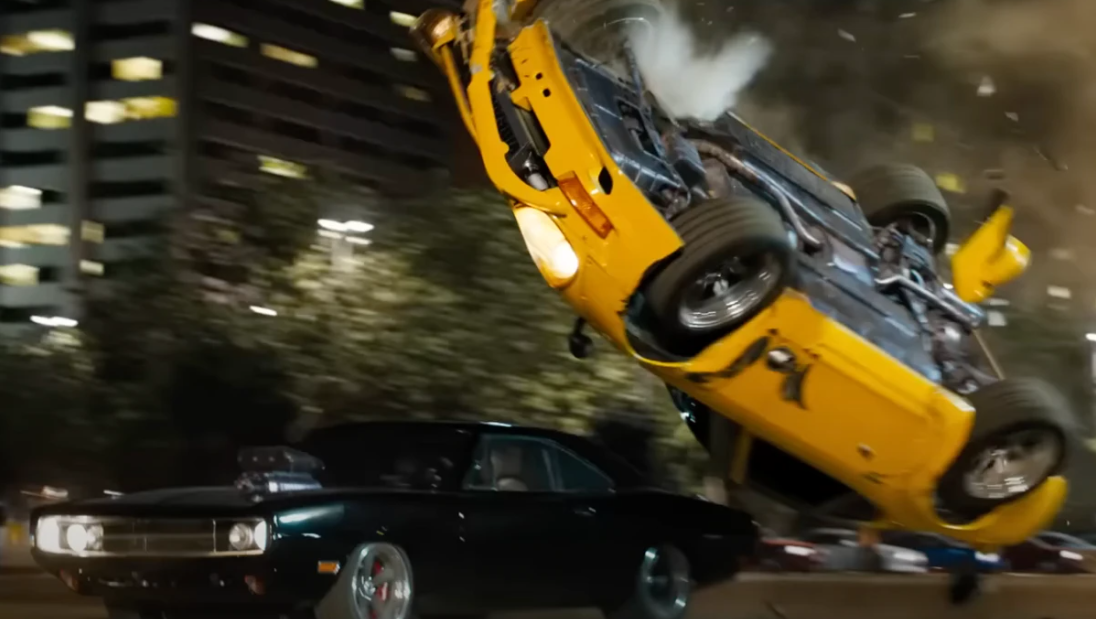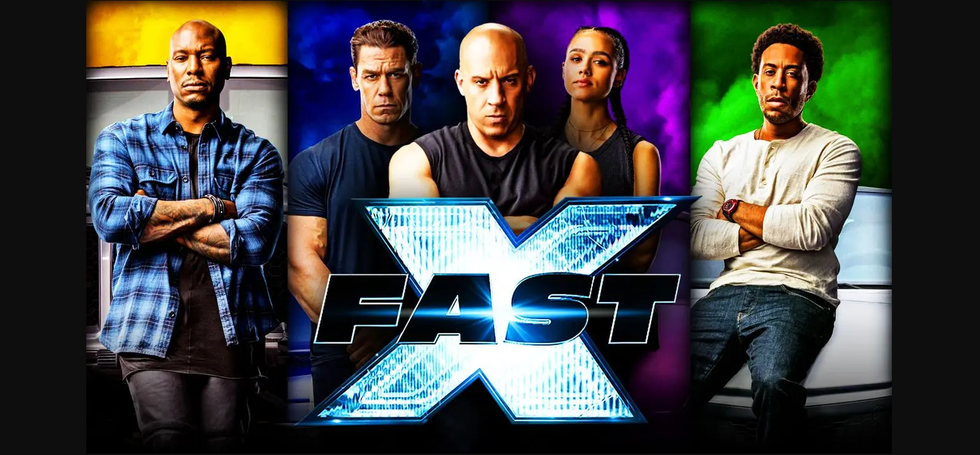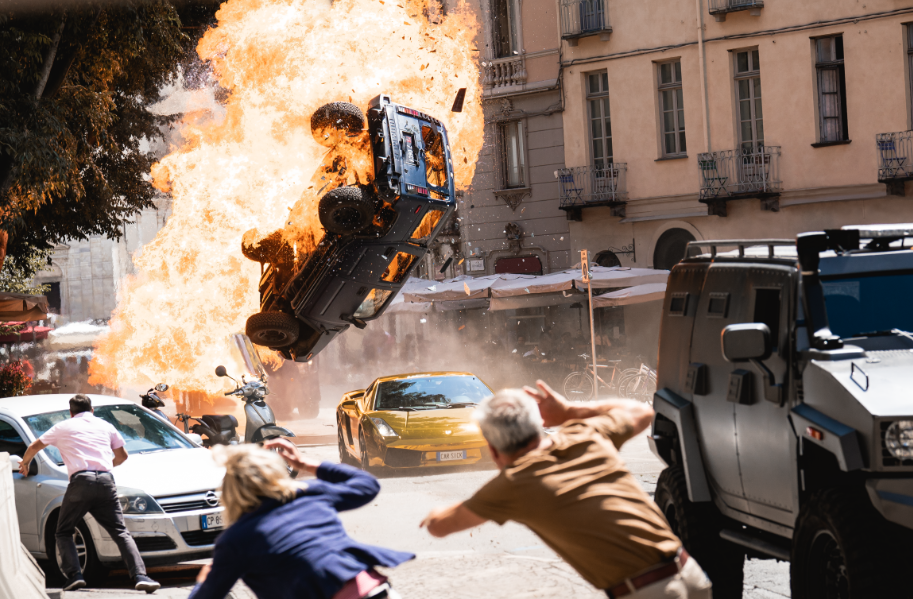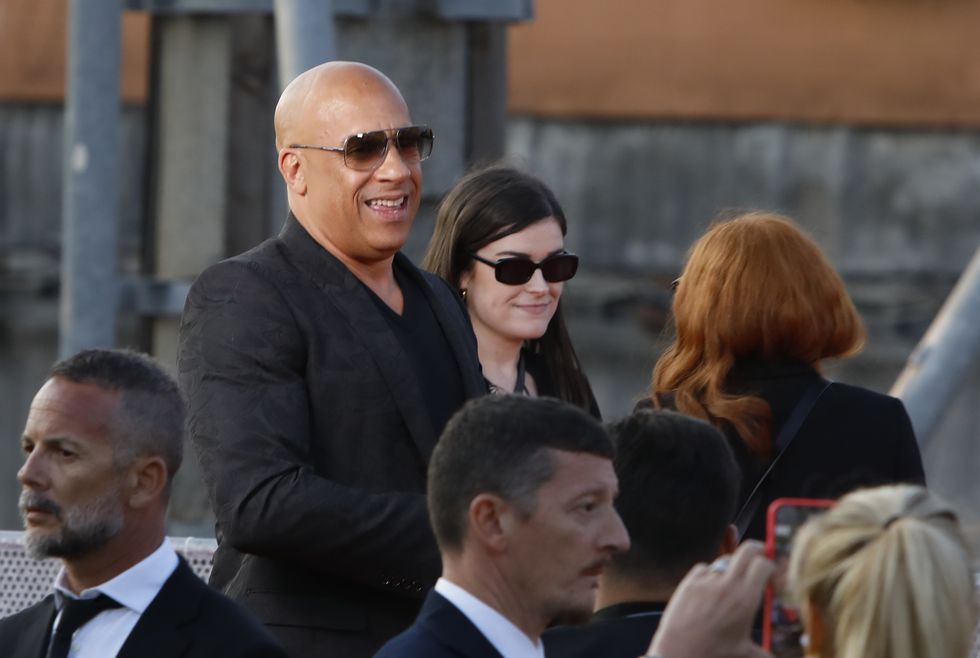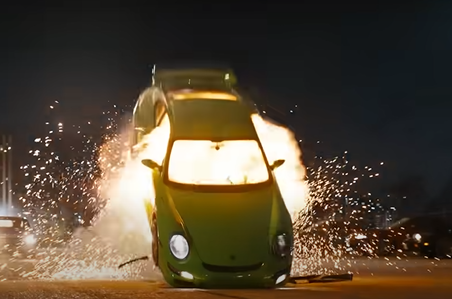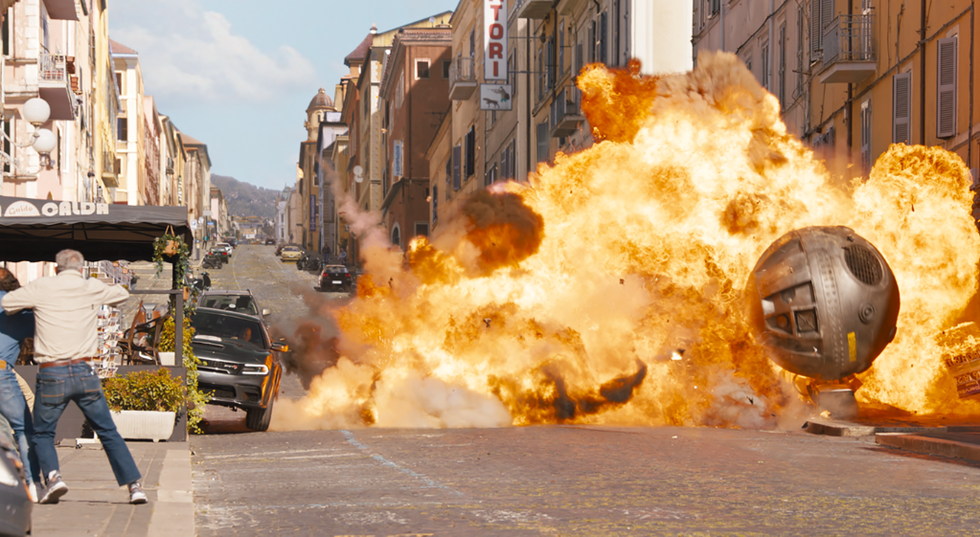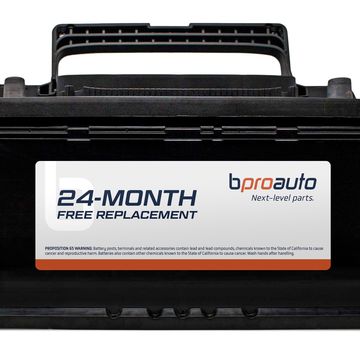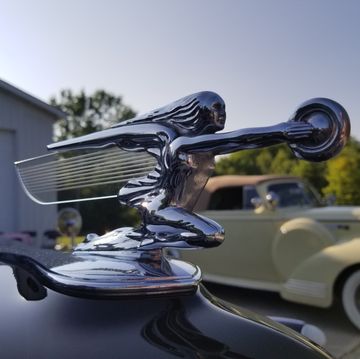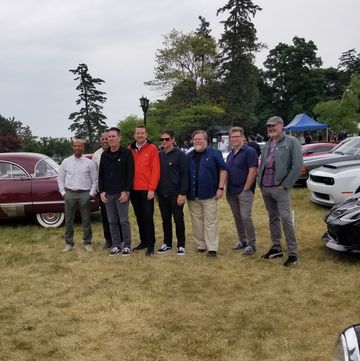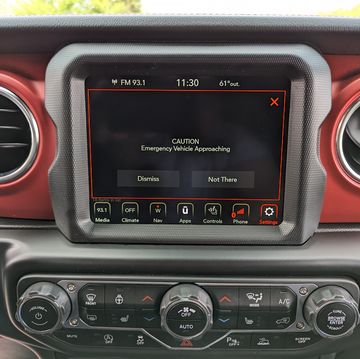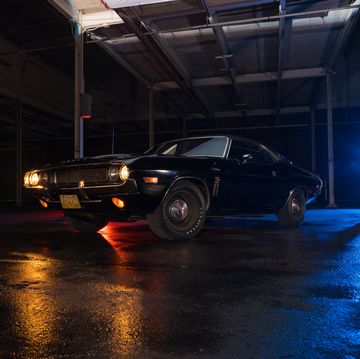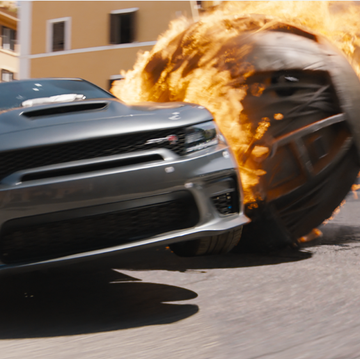Dennis McCarthy has maybe the best job in the history of work. He gets to build and watch get blown up hundreds of cool cars as the lead car supervisor for the Fast & Furious franchise, now in its tenth installment as Fast X opens May 19.
He actually did some work on 2Fast 2Furious, toward the end of production of that first sequel, then came on full-time with Tokyo Drift, the third Fast movie made. He has worked on every one since, swapping in more LS engines in more cars than anyone since maybe Smokey Yunick. And he is having a blast doing it.
We got to talk to him when all the work on Fast X was done, but even then he was busy. Word is there’s another Fast movie coming after this. Maybe even another one after that, though no one seems to know for sure.
Autoweek: What cars do we see in the movie?
Dennis McCarthy: So you open up in this movie with a Dodge Charger Hellcat with Dom driving. Letty’s on a very highly modified Honda CRF 250R. We have Han in an Alfa Romeo 1600 GV. We have Roman in a Lamborghini Gallardo. We have Dante (Jason Momoa) on a Harley-Davidson Pan America—we did a lot of modifications, really stripped it down into the bare necessities. There’s some military stuff, some H2 Hummers that we’ve tried to modify to look more like something you haven’t seen before. It’s just a good platform for building stuff like that.
Moving on into Act II, you’re introduced into Dom’s ‘70 Charger. I tried to back it up a little bit, you know, a little more retro, not as crazy as Fast 9 or Fast 8 or Fast 7. But still, more in tune with the first movie, heavily modified and much better. He goes up against Dante in what is one of my favorite drag races from the franchise in a while—a four-car drag race with the Jason Momoa character, who was Dante, and he’s in a ‘66 Impala. That car is a big-tire drag car, 540-inch motor, all the good stuff. Also, in this race there’s a Porsche (997 911 GT3 RS) and a (Nissan) 240 Z. So that’s a pretty cool segment of the movie. The whole variety of cars is what makes it great.
AW: You covered all the bases there. Anybody who likes any particular kind of car is going to see something they like in this movie.
DM: That’s the goal. I tried to get everybody’s favorite in there one way or the other. Moving into Act III, Dante reappears in a ‘66 Ford Fairlane, another cool car. Jason Momoa was very involved in the styling, the colors, and everything else, which always makes it fun. That’s kind of the same with Vin—Vin always wants to know what he’s going to be driving. Dom’s Charger also returns for Act III. The other car that is introduced in Act III is a ‘67 El Camino driven by Dom’s brother Jacob (John Cena). He talks about how it’s heavily accessorized—the car’s got cannons everywhere.
AW: The Dodge Charger in the movie goes off a bridge, smashes into a wall, crashes down onto cement, and Dom continues driving it? How is that possible?
DM: They are the most durable cars in the world. They almost have, like, this superpower. I think once Vince gets behind the wheel, they become one with the car and they’re just ready for anything. So yeah, I would say in the history of car movies the Dodge Charger will go down as the most durable car ever.
AW: The budget for Fast X, I saw one reference at $340 million. The very first Fast & Furious movie had a $2 million budget for cars. Can you give us a ballpark figure for how much of this film’s budget was yours to play with?
DM: It’s really a very difficult question because there’s so many other elements that go into that. For instance, shipping, you know, we’ve put probably 60 cars on planes to get to different countries. So it’s easier for me to try to itemize just one car, like a ‘70 Dodge Charger that we build, if I just go material-only is probably $60,000. Labor is hard to judge too, because I’ve got guys working on cars, they might work on this car for three hours, that car for two hours. And the reason I have a lot of practice answering this question is because accounting departments asked me what’s invested in that car, but it’s just, every minute of every day is spent building cars. It’s not like I put four guys on one car.
AW: Could you make a ballpark guess for how big your budget was for cars in this movie.
DM: I don’t know, it’s probably $4 or $5 million for cars that were just built from scratch, cars that we built and modified.
AW: Is there typically one hero car and then from that hero car there’s a number of replica cars made that you can crash and blow up and chop up and do different things to? Is that how it is?
DM: It is. One thing I will say is that in Fast & Furious movies, it’s just a little bit different. Because we will usually start building cars so early, that maybe the script is not 100% settled. So we’ll build all the cars the same. For instance, for one ‘70 Charger we built 10 ‘70 Chargers with the same chassis, same Brembo brakes, same 525-horsepower LS motor, all the same parts and pieces, identical cars. Then later on, when we start really figuring out what we’re going to do, yeah, then I might build a shell car. Or I might buy a Charger and just leave a 318 motor because I only had to drive it off a cliff or whatever it is.
But Fast and Furious, more than any other franchise in the world, they’re all hero cars. And the good thing about our franchise is a hero car looks like a stunt car. So it’s not like we have to hide the rollcage. The cars have rollcage, harnesses, fuel cells—that’s how they are on screen.
AW: Do the actors get to choose their cars? Do you read the script and say, you know, this guy would be perfect for this car?
DM: I will get the script, I’ll read it, and I will try to put what I feel is the best car for the character, for the environment, into that place. I’ll work back and forth with the writer. This usually happens before production starts. Then as actors come along, they might have some requests, some input. At the end of the day, the production designer has to be happy—the director, obviously, has to be happy, Universal Studios needs to be happy. You can imagine that to try to make everybody happy isn’t always the easiest thing in the world. But I think we come really close and I feel that I’ve been doing this franchise for so long that I have a sense of what car the character would drive. If you walked into my shop it would be obvious, ‘Oh, that’s got to be Roman’s car. That’s Letty's car,’ and so forth.
AW: Do carmakers ever pay for the privilege of being in this franchise? Dodge seems to be the most well-represented car in Fast & Furious history.
DM: Dodge has always been a huge partner with Universal as far as the pay side of it. That’s above my pay grade. I don’t get involved in any of those discussions. But I feel that the reason it works so well with Dodge is because the cars are so organic, they fit the character so well. And I think that Dodge just built a car that, to this day, is about the most muscle-car thing out there that you can buy. If we’re doing a deal with the carmaker and the car doesn’t fit, it’s going to be a no-go zone. The car has to be right, it has to have the performance, it has to have the look—otherwise it’s not even a consideration.
AW: Did I see the Dodge Charger Daytona SRT EV Concept in the movie?
DM: That car literally was just completed when we were filming. So we did sneak it in—that car does have a cameo in Fast X.
AW: How many cars have you destroyed in the course of the Fast & Furious part of your career?
DM: You know, that’s my number one question. And I’ve just never ever had the time to really give anybody a solid answer. I’d say we go through 200 to 300 cars a movie. That’d be a rough count. But you know, it’s a tough one. I’d have to hire a team of accountants just to figure that out.
AW: It’s a great thing to see: movies that are about cars getting smashed up. Everybody loves that.
DM: One of my favorite things in the world right there.
AW: What are your thoughts on CGI becoming a bigger part of movies?
DM: I’ll say it makes me a little nervous because CGI is so good now. I’ll walk into my living room and my kids are playing a video game and I think they’re watching a car race movie, it is so good. It’s incredible. But I think that’s what really makes this franchise different than most is we always try to keep a level of reality behind the scenes. I’m old-school—Bullitt and The Fall Guy and things of that nature are my kind of car chases.
But I think we’ve just had to raise the bar so much. It comes down to—in every movie you want to top what we did last time. So the only thing I can say is, when you do see a car on screen doing something, odds are the car’s really doing exactly what you see. We might have to enhance the background or this or that—there’s always a need for it. But we’re also using it (CGI) to play it safe, too. There are certain things where you don’t want to put a stunt guy in harm’s way, so CGI will take over.
But I think it’s great, it makes for a more exciting movie, it gives a director a lot more tools at his fingertips to create whatever vision he wants. I do think there’s a point when you don’t want to go too far because if you go too far you know then, is it a car movie anymore? Luckily Fast & Furious has always tried to keep it at least where the reality is—there’s always a real car and most of the time there’s a real driver behind the wheel.
AW: What was the best Fast & Furious stunt, out of 10 movies so far?
DM: Ooh that’s a tough one. Like I say, we always try to top the last one, so I’ll say overall Fast X is amazing. I love it. The excitement level is great. Just going back, I don’t want to say the best, but just things that stick out of my mind would be the Fast Five dragging the safe through the streets. Those are real, they were really dragging a safe through the streets of Puerto Rico. That was pretty huge. The train heist in Fast Five was awesome. The ramp car in 6, that was fun. I think that is going to make a comeback.
AW: What about the safe that was being towed around in Fast Five?
DM: It was metal. It was heavy, it had some weight to it. It was built by the Fast visual effects department. But it really had to have that weight to sell it, because that’s another great scene where you have to give the franchise credit—it’s about as real as you can get. We had two cars with two cables dragging the safe. It probably weighed, I’m gonna guess, maybe 1200, 1600 pounds, dragging through the streets, blowin’ over cars. And then one of my favorites being on-set with, we provided a Kenworth truck and then Effects built the core of a safe mounted to a Kenworth. And so that Kenworth would come down this bridge, hitting these cars, just blowin’ ‘em into oblivion. At the end of the day, you put all those elements together and it makes for one pretty awesome sequence.
AW: That big roller bomb ball thing in the Fast X, did you have anything to do with that?
DM: I can’t take credit for the rolling ball at all. That was built by Special Effects.
AW: What’s next? Is it going to be wrapped up in one more movie or two more movies?
DM: I don’t know. There’s a lot of rumors out there online. Is it one, is it two more? I’m not sure. I can’t confirm or deny. No one’s told me so I can’t tell you. But for me, more is better because there’s no other project that I enjoyed more than the Fast & Furious.

